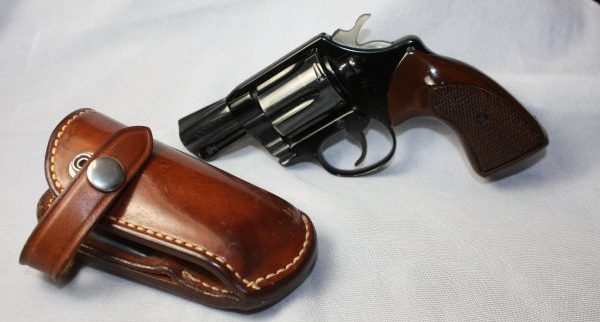
by Lee Williams
SAF Investigative Journalism Project
Can the government stop you from carrying a concealed handgun in public?
That’s the question before the United States Supreme Court in New York State Rifle & Pistol Association v. Bruen: “Whether the Second Amendment allows the government to prohibit ordinary law-abiding citizens from carrying handguns outside the home for self-defense.”
As the petitioners pointed out in their petition for writ of certiorari, “Perhaps the single most important unresolved Second Amendment question after this Court’s landmark decisions in District of Columbia v. Heller, and McDonald v. City of Chicago, is whether the Second Amendment secures the individual right to bear arms for self-defense where confrontations often occur: outside the home.” Petitioners argued that the “text, history, and tradition” of the Second Amendment do indeed secure this right.
On its face, this is a simple case. New York has had a handgun licensing system for more than 100 years. Nowadays, New York prohibits its citizens from carrying a handgun outside of their home without a license, and it requires license applicants to convince a licensing officer they have “proper cause” to carry a concealed firearm. In reality, unless they’re a celebrity, judge or other VIP, nearly all license applications are denied.
In his license request, petitioner Robert Nash cited “a string of recent robberies in his neighborhood and the fact that he had recently completed an advanced firearm safety training course.”
The licensing officer denied Nash’s request, saying he failed to show “proper cause.”
Petitioner Brendan Koch said he applied for a license to “allow him to carry a firearm for self-defense.” Koch, too, cited a bevy of training courses he had taken in support of his license request.
The same licensing officer denied Koch’s request, stating he “failed to show ‘proper cause’ to carry a firearm in public for the purpose of self-defense, because he did not demonstrate a special need for self-defense that distinguished him from the general public.”
The district court summarized: “Nash and Koch do not satisfy the ‘proper cause’ requirement because they do not ‘face any special or unique danger to [their] life.’”
Nash and Koch argued that the New York law violated their constitutional right to bear arms.
The Second Amendment Foundation filed an amicus brief in this case joined by a dozen state firearms associations. The brief lays out the history of why concealed carry is a core Second Amendment right. Scores of other pro-gun rights groups also filed friend-of-the-court briefs. These groups are optimistic about this case. Otherwise, they argue, the Court’s conservative majority would not have agreed to hear the case.
But what would a victory look like?
Second Amendment Foundation founder and Executive Vice President Alan M. Gottlieb said if the petitioners are victorious, there could be several likely outcomes – good, better, best and outstanding.
“I believe this law will be overturned,” Gottlieb said. “I believe we are going to win. The question is how big we win.”
“Lower than good,” he detailed, “would be if the court finds the law unconstitutional but that it applies only to the individual plaintiffs, and they send directions for New York to follow. That would be the lowest form of victory.”
A better victory, Gottlieb continued, would be if the court finds the New York law unconstitutional facially – unconstitutional on its face. Seven other states have similar “show cause” laws: California, Hawaii, Rhode Island, Maryland, Delaware, Massachusetts and New Jersey. All of their laws would be impacted by such a decision.
“But we’d really like the court to go further than that, and go to a ‘shall issue’ law – one that says if the applicant is not a prohibited individual, the government shall issue a license – because the ‘good cause’ requirement is unconstitutional and doesn’t work,” Gottlieb said. “Even better would be if they require a standard of review of heightened scrutiny, like strict scrutiny, because carrying a firearm outside the home is a core Second Amendment right.”
This scrutiny, Gottlieb said, would put the burden on the government to show why they should be allowed to infringe upon a right. It would require the government to show a court why lower levels of scrutiny couldn’t solve a potential public interest without infringing upon a constitutional right.
“Of course, they could expand our Second Amendment rights, which would affect other rights, not just carry laws,” Gottlieb said. “But that’s unlikely, since Chief Justice Roberts likes narrow decisions.”
Whatever the outcome, New York State Rifle & Pistol Association v. Bruen is destined to become a landmark Second Amendment case. The U.S. Supreme Court is scheduled to hear oral arguments on Nov. 3.
The Second Amendment Foundation’s Investigative Journalism Project wouldn’t be possible without you. Click here to make a tax-deductible donation to support pro-gun stories like this.